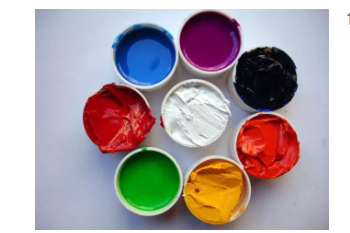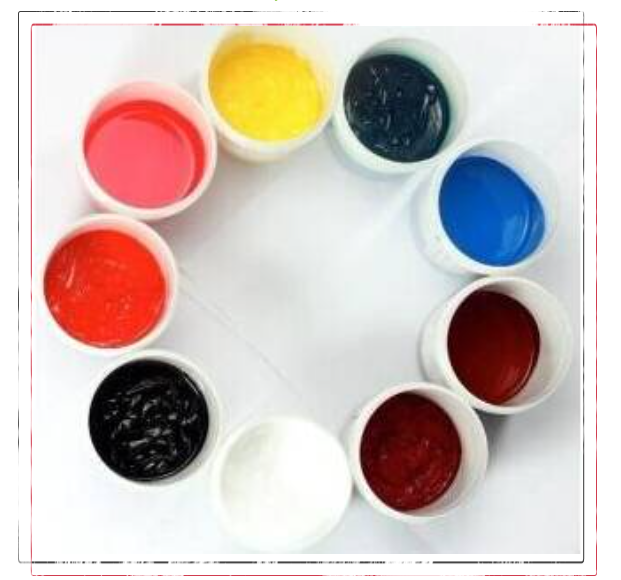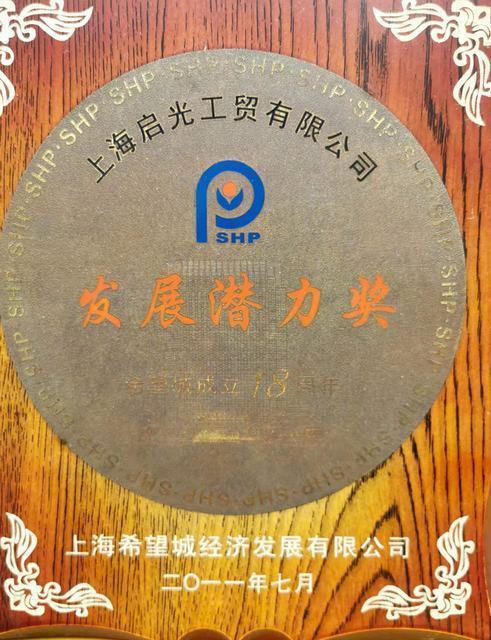Color paste
Colorful

Dispersed by pigments or pigments and fillers
A semi-finished product made from paint.
Color paste classification
Oil-based colorants that use pure oil as the adhesive are called oil-based color pastes. Resin paste is called resin paste with resin paint as adhesive. Since there are many types of paints, there are also many types of color pastes. In order to better disperse the pigments in the paint, a small amount of surfactant, zinc naphthenate, etc. is often added during the manufacturing process.
Color paste, as the name suggests, is a pigmented concentrated slurry, which is developed through strict processing technology using different pigments through pigment surface treatment, surface wrapping and other technologies. According to the different solvents used in the color paste, the color paste is divided into water-based color paste, oil-based color paste, water-oil general color paste, etc.; according to the different uses of the color paste, it is divided into coating color paste, tape color paste, papermaking color paste, Textile color paste, mechanical color paste, toy color paste, latex product color paste, etc.; according to the different tools for using color paste, people simply divide color paste into factory color paste and machine color paste, etc. Color pastes work together in nature to decorate the entire world: from clothing, daily necessities, toys, etc., to bridges, buildings, etc., all displaying colorful colors.
Color Paste History
Traditional paint coloring uses pigment powder to be added directly to the paint, or some paint manufacturers simply make the pigment into a slurry and then add it to the paint to color the paint. There are certain disadvantages in doing so: such as poor color reproducibility and uneven coloring. Due to the lack of professional technology and technology, the pigment particles are relatively coarse, the tinting power is not high, and the pollution is serious. When added to the paint, after the paint forms a film It has poor light resistance and weather resistance, and is prone to fading, powdering, etc.
With the intensification of market competition, the division of labor has become more and more detailed, and the demand for high-end coatings has become louder and louder. In the 1990s, domestic color paste manufacturers emerged as the times require. At the beginning, one or two companies specialized in color paste production. In fact, in foreign countries, there were specialized color paste manufacturers in the 1960s. The more famous brands were Clariant, Degussa, Hibis, etc. At that time, there were some domestic paints with strong quality awareness. Manufacturers began to purchase color pastes from abroad, but the prices were relatively high, such as iron oxide series color pastes. At that time, the price was even as high as about 100 yuan per kilogram. Later, domestic color paste manufacturers started to rise, and the price also dropped relatively, from 30 to 30 yuan. The price has dropped from more than 10 yuan per kilogram to the current price of more than 10 yuan per kilogram. On the one hand, technology and equipment have been improved, keeping costs under control; on the other, competition has become increasingly fierce, and some manufacturers have reduced profits.
Despite this, the quality of color paste products has improved a lot compared to the beginning, and the varieties have also been improved. There were only one or two color paste manufacturers at the beginning, but now there are 20 or 30, mainly distributed in Jiangsu and Zhejiang. , Shanghai, Guangdong and other places.
Color paste selection

Based on the coloring objects and environmental requirements, colorants are mainly divided into two types: lightfast and lightfast. Generally, when there is no system compatibility, internal use is based on the principle of lowest cost to achieve color requirements, and light fastness is not required. For external use, the following factors must be considered:
a. Light and weather resistance;
b. Chemical media resistance (mainly acid and alkali resistance);
c. Compatibility with the system used;
d. Tinting strength, hiding power and color development;
e. Matching between color paste and color paste;
f. Storage stability of color paste.
Generally, exterior coatings have very strict requirements on color retention, so when selecting color pastes, special attention should be paid to the light, weather resistance, acid and alkali resistance of the color pastes. On the premise of good compatibility, tinting power, hiding power, color development and storage stability, the matching of colorants is also crucial. You should try your best to choose single-color color pastes with superior properties such as light resistance and weather resistance, but in fact they are often composite colors, so it is best to follow the principles of inorganic and inorganic, organic and organic or light and weather resistance and other properties close to each other (1/25ST dilution , the light resistance should be at level 7~8 or 8, and the weather resistance should be at level 4~5 or 5) as the principle. In this way, the color retention outdoors can be ensured and the long-lasting effects caused by obvious differences in the weather resistance of the colored paste can be avoided. Cause discoloration orFilm defects such as uneven color and blooming.

Disadvantages of color paste
If the paint paste is stored for too long, the color will deepen. This is caused by the evaporation of water in the paint paste. The pigment content of currently available paint pastes on the market is less than 20%, because they are usually processed using water-containing filter cakes. Because the paint paste contains too much water, it not only evaporates easily in summer, but also freezes in winter. Therefore, the storage time of purchased paint paste should not be too long, otherwise it will be difficult to control the dosage.
Currently, paint pastes are developing towards high concentrations, mainly using dry filter cake processing. After adding corresponding dispersants, wetting agents and ethylene glycol, paint concentrates with a pigment content of 30%-50% can be made. Pulp. In this way, the above disadvantages can be overcome.
Recommended reading:
Tips for blending multiple color inks
What is color masterbatch and basic knowledge of color masterbatch
Introduction to the performance of masterbatch pigments